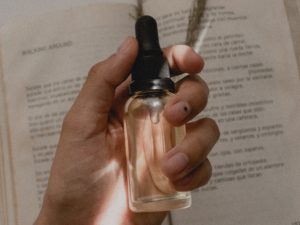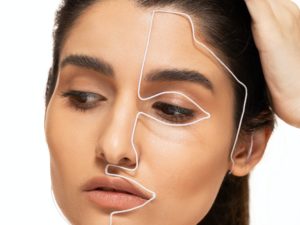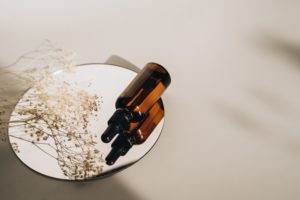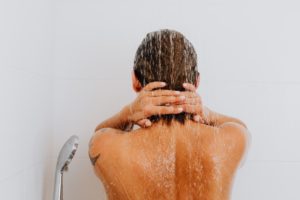Skin Cycling – Everything You Need to Know About that Viral Skincare Trend
We know that everyone needs a skincare routine for the sake of skin health and trying new techniques and products can make the experience more fun! However, some trends, like icing, can actually make your skin worse, doing more harm than good. Skin cycling has gotten a lot of attention in recent months, accredited to stunning skin transformations.

What is skin cycling and does it actually work?
Let’s find out and sort through skincare hype and actual facts. Here is your complete guide to skin cycling.
What is Skin Cycling
The dermatologist Dr. Whitney Bowe is credited for introducing the process of cycling through skin care active on TikTok. She compares skin cycling to workout cycling, as you can switch through different workouts so that you see more fitness benefits.
When applied to skincare, this means cycling through active ingredients. You have a nighttime routine where you exfoliate, one where you use retinoids, and two where you restore and recover. You cycle through these to give your skin time to restore and benefit from the active ingredients you are using. There is merit to this order, as it gives the skin time to use the active ingredients effectively with less risk of damage.
Dr. Bowe emphasizes that skin cycling is for a nighttime routine.
During the day, you can keep it simple. Clean the face with water or a mild cleanse, apply a moisturizer, and use SPF!
Benefits of Skin Cycling
The benefits of skin cycling are actually getting benefits from the active ingredients you are using. We all know that there are some ingredients you should not be mixing, such as too many exfoliating chemicals, but there should also be a process nightly.
Therefore, by using an exfoliating routine, your skin is ready to really absorb and use the active ingredient retinoids. After retinoids, the skin needs time to restore hydration and recover. These recovery days prevent harm to the skin barrier. Signs of a damaged skin barrier include breakouts, inflammation, redness, and even pain. Some damaged skin barriers become so sensitive, that even water stings!
How to use Skin Cycling to Improve Your Skin
Skin cycling is in theory, a four day cycling. Below are the steps to skin cycling as described by Dr. Bowe.
Night 1: Exfoliate
Exfoliating is the act of using either physical or chemical ingredients to remove dead skin cells from the skin. Physical ingredients usually include scrubs which tend to be too damaging to use on the face. Chemical exfoliating ingredients include lactic acid, AHA (alpha hydroxy acid), BHA (beta hydroxy acid), and many more.
Exfoliating is a great way to clear the skin and reduce the appearance of pores, as it can help remove unwanted dead skin clinging to the surface of the face. It can help reduce dark spots, brighten complexion for a glowy appearance, and leave the skin smooth and soft.
Start with gentle exfoliating products, such as lactic acid, and work your way up to a stronger exfoliate as needed.
For example, lactic acids can come in serums while salicylic acid can be found as a cleanser or spot treatment. Some lotions even contain salicylic acid, for soft oily control and blemish reduction.
Night 2: Retinoids
This is the night you want to use a retinoid, as they are the most studied ingredient for improving skin. Retinoids are a form of vitamin A with many benefits such as improving skin elasticity and increasing collagen production in the skin. Retinoids also increase cell turnover, making them good for reducing dark spots and acne. Retinoid is marketed as an anti-aging ingredient, but it is highly important for general skin health.
Retinoids come in different strengths, like retinol, which is weaker compared to prescription tretinoin.
Differin gel, a new retinoid called adapolin, is often used as an acne treatment and usually causes less irritation.
Use a pea-sized amount on the skin, making sure to spread evenly on the face and neck. Start with lower percentages and up it as needed.
Night 3: Restore and Recover
This night is dedicated to restoring the skin barrier. This means using hydrating and moisturizing ingredients to help the skin return to a stable baseline.
A good ingredient to look out for is ceramides, which help restore and repair the skin barrier, reducing dryness. Use emollients too, as they can soothe and soften the skin by adding a protective layer. Emollients include silicones, mineral oil, petrolatum, or facial oils. Other good ingredients include humectants, which draw moisture from the air, such as glycerin and hyaluronic acid.
Exfoliation and retinoids are both strong treatments that should not be used too often. By adding these recovery nights, the skin can reset and can properly become accustomed to active ingredients.
Night 4: Restore and Recover
This is a second night of restoring and recovering! Use the same products used in the previous restoring night.
Slugging may be a great skincare technique to use here! Slugging can help increase the effectiveness of hydrating and moisturizing ingredients tenfold!
Night 5: Repeat the Cycle
At this point, you can use an exfoliating product and start the cycle all over again!
Quick Tips for Skin Cycling
Here are some quick tips for proper skin cycling!
Start With a Low Concentration of Actives
This is especially true with exfoliation and retinoids. Oily skin or mature skin may exfoliate more often than dry skin and sensitive skin.
Too high concentrations of retinoids may cause tightness, peeling, and redness, so start with low percents and work your way up as the skin adjusts.
Use the Right Order of Products
The order your activities go into skincare depends on the product. Some active ingredients come in cleansers, some in the form of serums, some in lotions, etc.
Remember to try and go from thinnest consistency to heavier consistency!
Do Skin Cycling At Night
Skin cycling is to be done at night for many reasons. The skin uses active ingredients and repairs itself at night, as this is a time for regeneration. Furthermore, some exfoliate like AHA and BHA make your skin more sensitive to the sun and should not be used during the day.
Ingredients like retinoids tend to decompose in light, so they are also best left for nighttime use.
Extend the Recovery Days if Needed
Some people cannot exfoliate every 4 days. That’s ok! If needed, extend the restore/recovery days, exfoliating less frequently.
Once Accustomed, Up the Active Ingredients
If you see that a soft exfoliate like lactic acid isn’t giving you the results you want, up the percent of the ingredient or move on to a stronger exfoliate like AHA! Do this with care as a stronger exfoliate may do more harm than good.
This can be applied to retinoids too. If your skin becomes accustomed to 0.5% retinol, try upping it to 1%. This will help the active work a little faster but does come with the risk of irritation. If you experience irritation, try using a moisturizer first, then adding the retinoid, or going back down in percent!
The Takeaway
Skin cycling is a pretty good trend.
This means skin cycling can allow your skin to benefit from strong active ingredients while reducing the risk of a damaged skin barrier. A damaged skin barrier can lead to acne, dark spots, inflammation, redness, and even pain, so it’s definitely some time to avoid.
Use the four-night cycling where night one is exfoliation, night two is a retinoid, and the last two nights consist of recovery.
Remember, skin care is about progress, not perfection! Enjoy the journey to truly appreciate the steps along the way to goals.





